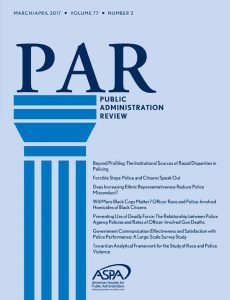Exploring Public Transits and Quality of Service
As an avid user of the metropolitan bus system for the past five years, I have met a lot of interesting characters. These include folks of different background, age, size, and color. I have witnessed events on the bus that are either too crude to describe in detail or too ridiculous to seriously warrant my attention. Over the years, I can say that my experience in using public transit services has been two-fold. On one hand, public transits have been integral in transporting me to and from work. However, on the other hand, it has created a space where I am bombarded with nuisances (people talking to me when I am clearly not interested, or the unpleasant odor emanating from the seats) that make my journey an unpleasant experience. Other minor frustrations include the wait time and lack of adequate shelter in harsh weather conditions. I am sure that other users in my metropolitan area would provide the same outlook, and given the increase in users and the need for this service, I predict that these conditions will only be exacerbated.
Increased population growth in metropolitan cities necessitated the creation of transit stations where persons could transfer from one transportation to the next (Iseki & Taylor, 2010). During the early 19th century, as cities expanded and horse-drawn transportation became accessible, the U.S. witnessed the exodus of the rich from areas close to the city to more suburban areas, leaving the poorer classes who were impotent to afford similar amenities— residing adjacent to the city (Glaser, Kahn, & Rappaport, 2008). According to Glaser, Kahn, and Rappaport (2008), slightly over 19% of the population of residents living in metropolitan areas are poor, in comparison to less than 8% of persons living in suburban areas. Lower population density in the suburbs— and availability of finances to purchase cars— explains the lower levels of public transportation in those regions. While, on the contrary, high population density and financial mediocrity in metropolitan cities fostered the need for public transportation. Individual level characteristics, such as age, gender, and disability in combination with socio-economic characteristics, such as income and location determine travel preferences. For example, persons from lower-income households prefer to take the bus and are more concerned about cost than individuals from higher income brackets. Also, individuals with disability were more concerned about accessibility and comfort of the bus than younger able-bodied individuals (Stradling, Carreno, Rye, & Noble, 2007).
It is crucial to note that transportation by bus is not a confined phenomenon to metropolitan areas in the United Sates. In fact, according to Stradling, Carreno, Rye, and Noble (2007), Britain alone experienced more than 4.1 billion bus passengers between 2005 to 2006, with Scotland showing a rapid increase in bus users over the past five years. However, given that cities are rapidly growing and the poverty gap has been exacerbated by unemployment and a constellation of social ills, bus services becomes a necessity for a large populous of residents in the city (Stradling, Carreno, Rye, & Noble, 2007). The advent of bus services comes with cost, wait time, transfer time, and other nuances that impact the quality of services passengers received. And, with more individuals using the bus in contemporary society compared to previous years, it will continue to be a common occurrence for transit users to spend considerable time outside of transit vehicles than inside the vehicles. In fact, much time is expended waiting, transferring, and walking to the bus stop than the amount of time spent during the actual ride to one’s destination. Therefore, the ease and accessibility in using transit services will be a crucial determinant of bus patronage (Iseki & Taylor, 2010). Despite the importance of reduced wait times for users, a more crucial concern of bus passengers pertains to the issue of safety while waiting on or riding the bus. According to Iseki and Taylor (2010) safety is a key concern of transit users, more so than transfer and reliability. The authors note that satisfaction with safety varies based on the time of day and gender of the user. For example, users are more likely to feel safer during the day than at nights, and issues concerning safety were primarily, but not exclusively, voiced by females (Stradling, Carreno, Rye, Noble, 2007).
The physical condition and amenities of the bus and bus station is a marginal concern of users, while information about bus schedules and routes and accessibility of the bus station (navigating to one’s stop) are key issues consistently related to users’ satisfaction ( Iseki & Taylor, 2010). Despite that wait and transfer times are known to play a crucial role in the level of bus patronage, previous research has neglected to investigate the impact of wait, walk, and transfer time on people’s travel behavior, but have devoted much investigation to in-vehicle travel experiences and the physical conditions of transit stops and stations (Iseki & Taylor, 2010). While public transportation by bus provides passengers with an element of social interaction that cannot be replaced by cars— as well as reducing environmental pollutants, many individuals are still reluctant to reduce car travel and employ public mode of transportation, possibly because of the inconvenience it may have on travel patterns, or because individuals do not assess gas emissions as crucial environmental concerns to warrant radical change (Gatersleben & Uzzel, 2003).
Given the many concerns of public transportation, it is understandable that some users would not desire to employ public transits. Besides, the accessibility and privacy of one’s car create more comfort and eliminate a lot of frustrations that accompany the use of public transits. Nonetheless, as a society, we all have a role to play in protecting our environment and reducing gas emissions, and if one mode of reducing environmental pollutants is by reducing car travel, I advocate for a reduction (but not elimination) of private vehicles. I believe that this would help to foster an equal balance between the use of private and public vehicles that would create a ‘greener’ environment.





1099-1328/asset/dsa_logo.jpg?v=1&s=e4815e0ca3064f294ac2e8e6d95918f84e0888dd)
With havin so much content do you ever run into any issues of plagorism or copyright infringement? My site has a lot of completely unique content I’ve either created myself or outsourced but it seems a lot of it is popping it up all over the internet without my permission. Do you know any ways to help reduce content from being stolen? I’d truly appreciate it.